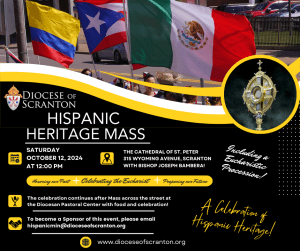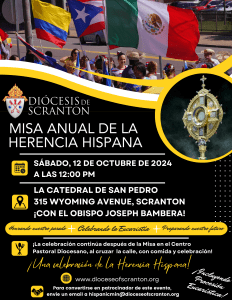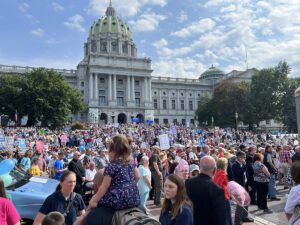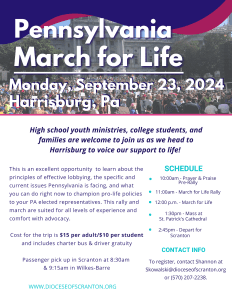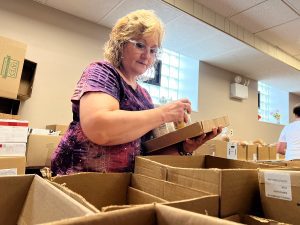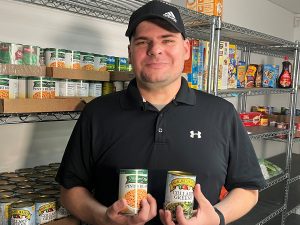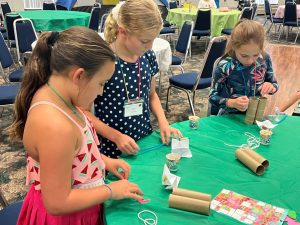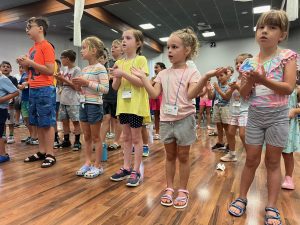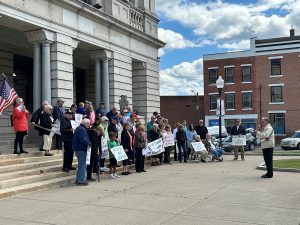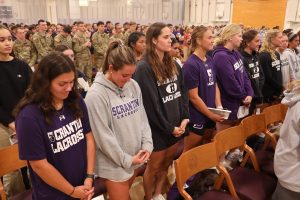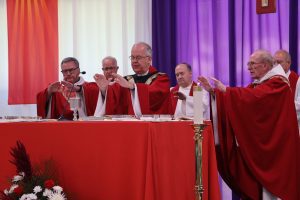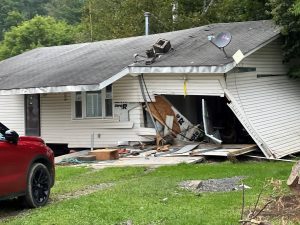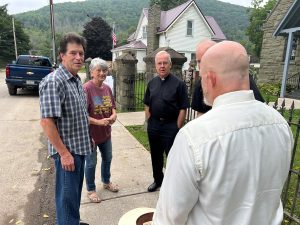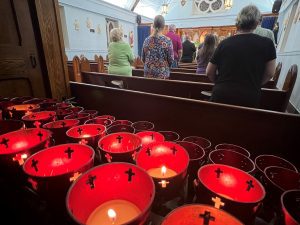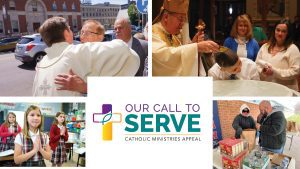
SCRANTON – In a time when communities are more interconnected than ever, the Diocese of Scranton is calling upon its faithful to unite in a transformative effort to support essential Catholic ministries across northeastern and north central Pennsylvania.
The 2024 Catholic Ministries Appeal (Diocesan Annual Appeal) is now underway and comes with a pressing need for donations, vital to sustaining and expanding the life-changing work carried out by the Church.
This year’s Appeal, under the theme ‘Our Call to Service,’ emphasizes the profound impact that every contribution can make. The Diocese of Scranton relies on the generosity of its parishioners to fund essential programs and services that touch tens of thousands of lives and no one parish can do on its own.
“In the Gospel of John, Jesus, the Good Shepherd, reminds us that He came so that we may have life, and have it more abundantly,” Most Rev. Joseph C. Bambera, Bishop of Scranton, said. “These are challenging economic times and there are many people in need who are relying on the Church of Scranton.”
For example, every night, individuals in our local community face the harsh reality of homelessness.
For many years, the search for a safe place to sleep in the city of Wilkes-Barre meant bouncing around from church to church – but hope is on the horizon.
Work on a new, permanent home for Mother Teresa’s Haven, Catholic Social Services’ emergency shelter in Luzerne County, is now underway.
The location will be directly above the Saint Vincent de Paul Kitchen on East Jackson Street.
Donations to the 2024 Appeal will help to ensure the shelter opens and operates – possibly even being able to expand its hours when the winter weather arrives.
“I see us here, being able to provide more services than we can ever imagine right now, because we’re going to have office space here, we’re going to be able to provide more case management,” Joseph Mahoney, Chief Executive Officer of Catholic Social Services, explained.
The need for a permanent shelter has never been more urgent.
Last year, Mother Teresa’s Haven provided nearly 5,400 individual nights of shelter to men in the community.
Harry Lyons has overseen the shelter for the last decade.
“More and more every year, it is regular working people who just can’t make ends meet and lose their housing,” Lyons stated.
Donations to the 2024 Diocesan Annual Appeal help to fund the important work of Catholic Social Services – and along with other funding sources – are helping to turn the new vision for Mother Teresa’s Haven into a reality.
Together, we can end the cycle of uncertainty and hopefully get those experiencing homelessness into permanent apartments.
“When I can keep somebody within Catholic Social Services and get them into a program where I know they’re going to be taken care of, it means the world to me,” Lyons added.
In the past year, Catholic ministries have been at the forefront of addressing critical needs. From providing food and shelter to those in need, to offering educational programs that uplift young people and adults alike, the Church’s outreach is vast.
The goal for the 2024 Appeal is set at $4.5 million, a figure that reflects the growing demand for diocesan programs and the urgent need to address emerging challenges. The funds raised will support vital Catholic ministries, including:
• Catholic Social Services
• Catholic Education
• Catholic Communications
• Vocations, Clergy Care and Support of Seminarians
• Parish Life Initiatives
• Faith Formation and Social Justice Grants to Parishes
Most parishes will celebrate the important work of the Diocesan Annual Appeal on the weekend of Sept. 21 & 22, with pastors showing one of eight videos that have been prepared to highlight the specific programs supported by donations.
Bishop Bambera is asking all faithful to consider how God is calling them to participate.
“Your donations ensure that the light of Christ shines brightly in our midst,” Bishop Bambera said. “By making a sacrificial gift, which can be spread out over the course of several months or done as a one-time payment, we will not just meet people’s immediate needs. We will be building a community of compassion and support, where everyone feels valued and cared for.”
To learn more about the many Catholic ministry programs supported by your donations, or to make a safe and secure online gift, please visit annualappeal.org.
Contributions to the 2024 Diocesan Annual Appeal can also be made by calling the Diocesan Development Office at (570) 207-2250 or mailing a check to: 2024 Diocesan Annual Appeal, c/o Development Office, 300 Wyoming Avenue, Scranton, PA 18503. Please include the name of your parish in the memo line.

